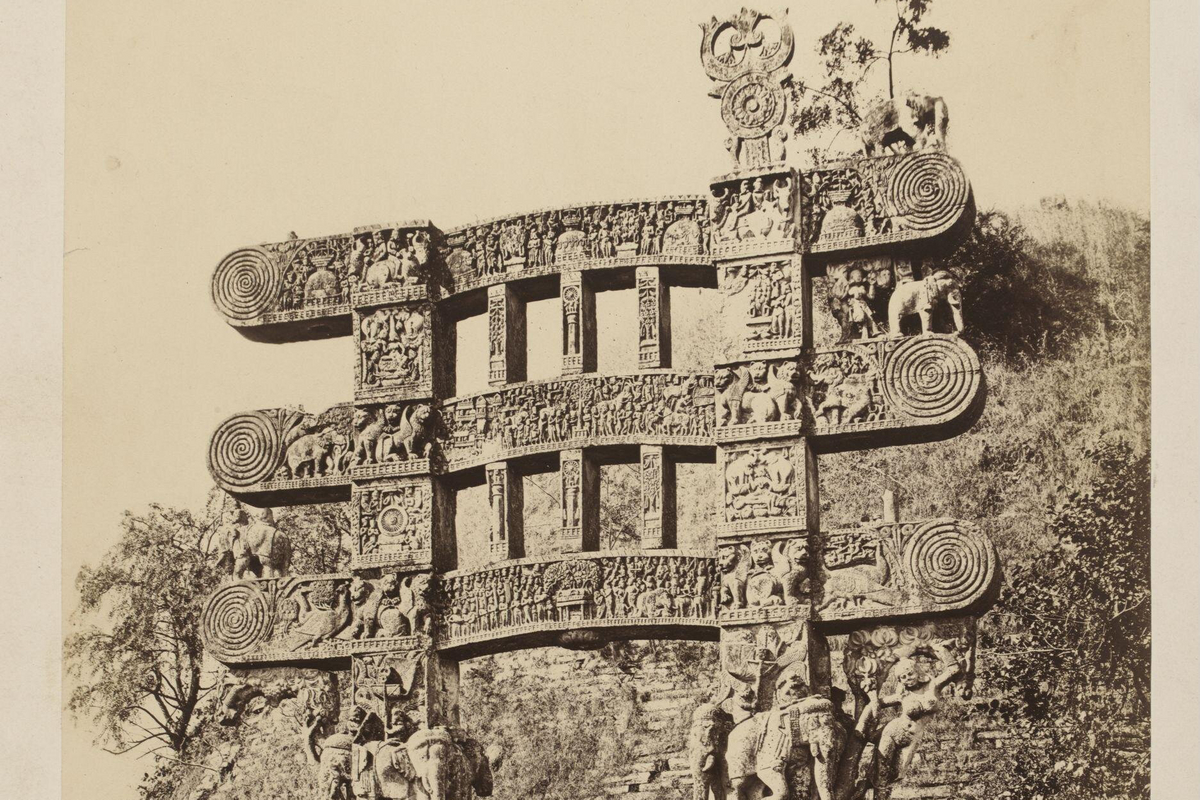Buddhist Monuments at Sanchi
The oldest Buddhist sanctuary in existence

Sanchi
The Great Stupa (Stupa No.1) of in the 3rd century BCE
O
n a hill overlooking the plain and about 40 km from Bhopal, the site of Sanchi comprises a group of Buddhist monuments (monolithic pillars, palaces, temples and monasteries) all in different states of conservation most of which date back to the 2nd and 1st centuries B.C.It is the oldest Buddhist sanctuary in existence and was a major Buddhist centre in India until the 12th century A.D.
The stupas, temples, viharas, and stambha at Sanchi in central India are among the oldest and most mature examples of aniconic arts and free-standing architecture that comprehensively document the history of Buddhism from the 3rd century BCE to the 12th century CE. About 10 km from Vidisha, the Buddhist monuments at Sanchi, located on a serene and picturesque forested plateau, are also considered to be the sacrosanct Cetiyagiri in the Sri Lankan Buddhist chronicles, where Mahindra, the son of Emperor Aśoka, stopped prior to undertaking his journey as a missionary to Sri Lanka. The enshrined remains of Sariputra and Maudgalyayana (chief disciples of Buddha) in Sanchi were venerated by Theravadins, and continue to be revered to the present day.
The inception of Sanchi as a sacred centre is attributed to the Mauryan emperor Aśoka. His reign in the 3rd century BCE is considered instrumental to the spread of Buddhism throughout the Indian subcontinent. With the establishment of the monolithic Aśoka Stambha (pillar) bearing a highly elaborate capital, Emperor Aśoka distinguished Sanchi as a site of great importance. Contemporary with the stambha was a brick stupa, which was later increased in scale during the Sunga dynasty (184-72 BCE), covered with an ashlar stone veneer, and augmented with circumambulatory paths and staircases with ornate balustrades, harmika, yashti, chhatra, and four torana, which were later ornamented during the Satavahanas dynasty in the 1st century CE. The last addition to the grand stupa was during the Gupta dynasty (5th century CE), when four shrines were added at the cardinal entry points. Today, this grand structure of Sanchi (“Stupa 1”) is considered an incomparable example of the mature phase of Indian stupas. Since Aśokan times, subsequent powerful empires that reigned over this region – such as the Sunga, Kushana, Kshatrapa, and finally Gupta dynasties – continued to contribute to the expansion of Sanchi with the construction of hypostyle, apsidal, and other temples and shrines, comparatively smaller stupas (Stupas 2 and 3), and numerous viharas. Corroborated by inscriptions present in the property, Sanchi remained an important seat of Buddhism until the 13th century CE.
The Buddhist monuments at Sanchi contain an appreciable concentration of early Indian artistic techniques and Buddhist art, referred to as its Anionic School or Phase. Depicting Buddha through symbols, the sculpted art shows the evolution in sculpting techniques and the elaboration of icons, especially depicting Buddha. Stories and facts of great religious and historical significance, enlivened with bas-relief and high-relief techniques, are also depicted. The quality of craftsmanship in representing the gamut of symbolism through plants, animals, human beings, and Jataka stories shows the development of art though the integration of indigenous and non-indigenous sculpting traditions.
National Parks of India
India has more than 200 wildlife sanctuaries and about 100 of them are classified as National Parks. Here is a list of national parks of India. The names of the national parks are organized according to the state in which they belong to. Some of the national parks are speared over many states and only one state in listed in such cases. You can see the same list of national parks in India here arranged in the alphabetical order of their names.
